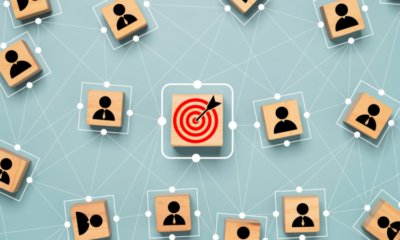It’s been said, ad nauseam, that content is king. But these days, a more accurate statement is probably: customer experience is king. And, in our hyper-connected world where everyone is fighting for attention, good content is what drives good experiences.
Businesses use content marketing strategies to generate brand awareness, educate prospects and customers and establish credibility. Increasingly, delivering a good customer experience means delivering relevant, personalized content to customers in a way that works for them. Providing the content customers need when they’re ready for it ultimately leads to better outcomes for marketers.
That means scaling content so it’s always fresh, relevant and personalized across the many touchpoints consumers use when interacting with businesses.
How important is personalization in content marketing? About 71% of consumers expect businesses to deliver personalized interactions, according to recent McKinsey data. Nearly three-quarters of people will look elsewhere for whatever item or service they need when this expectation isn’t met.
In this post, we’ll cover:
Estimated reading time: 7 minutes
What is content marketing?
Content marketing is a marketing approach or discipline that relies on developing various content types and assets focused on getting people to act (e.g., sign up for a newsletter, place an order, ask for more information, etc.)
Unlike paid advertising, content marketing primarily uses organic approaches to attract and engage customers. Content, in this context, includes written or visual assets (e.g., guides, articles, blog posts, graphics, videos, social posts, etc.) But paid content promotion sometimes factors into content marketing – for example, sponsored content on publications or gated content that requires a fee to access.
Content marketing is closely linked to inbound marketing and other customer experience-based approaches. It’s often used as a top-of-the-funnel tactic to attract prospects and turn them into leads or customers. Still, it can also be used to nurture existing relationships and convert leads into customers.
The Content Marketing Institute’s (CMI) official definition of content marketing is:
“A strategic marketing approach focused on creating and distributing valuable, relevant and consistent content to attract and retain a clearly defined audience — and, ultimately, to drive profitable customer action.”
There are three types of content marketing models which include:
- Paid: Content sits behind a paywall or requires some sort of purchase to access.
- Owned: Content is produced by a business and published on its own channels (e.g., website, blog, social media).
- Earned: Content is published by someone other than the company (e.g., user-generated content, influencer content, media coverage, etc.).
Regardless of where your content lives or lands, there are two unifying features that define a good content marketing strategy — relevancy and quality.
Why marketers should care about content marketing
The consumer buying cycle is an increasingly self-serve process scattered across multiple touchpoints. To adapt to consumer expectations and keep up with competitors, marketers must create a large volume of high-quality content that can be effectively shared across many different channels.
Standing out in this cluttered content ecosystem requires producing personalized content at scale. Content automation tools and platforms allow companies to produce, manage, share and amplify content while facilitating scalability. In short, you need content to compete in today’s customer experience-driven landscape and technology to produce content at the volumes required to make an impact.
How effective is content marketing?
About 91% of companies said they achieved some level of success with content marketing in 2021, according to Semrush’s 2022 State of Content Marketing Report. Most respondents said they planned to increase content budgets and hire more content talent in 2022.
Currently, content marketers measure success by looking at traffic, search rankings and leads. But this is changing. Content marketers are increasingly focused on other measures like engagement, conversion rates and ROI. Of course, there are tech tools that help with this.
For example, customer journey analytics tools, such as Qualtrics, monitor every customer interaction with a company and analyze how each piece of the journey contributes to action, like a sale, conversion, or request for information.
Journey analytics evaluates every piece of content a customer interacts with across the entire buying cycle and assesses how it impacts a measurable outcome (e.g., a sale, new customer, conversion, etc.)
Who uses or works with content marketing tools?
The most common teams that work with content marketing tools are those that deal with driving website traffic, engagement, leads and sales. This includes:
- Marketing: Content is used to attract prospects and turn them into leads at the top of the funnel.
- Sales: Content is used to accelerate the sales process by providing prospects with the information they need to make a purchase.
- Customer experience: Content helps reduce customer churn and drive upsells/cross-sells by keeping customers engaged post-purchase.
- Support and service teams: Content helps reduce the number of inbound support requests by proactively addressing common customer questions and issues.
Some job roles that work with content marketing tools include:
- CMO: Guides content strategy and works with other C-level executives to establish content goals.
- Content manager: Oversees content creation and distribution.
- Content planner: Executes content strategy and plans content calendar.
- Content writer: Creates content.
- Editor: Reviews and approves content.
- Designer: Creates visuals to accompany content.
- Marketing analyst: Tracks and reports content marketing performance metrics.
- Sales manager or agent: Uses content to support the sales process.
- Customer success manager or agent: Uses content to keep customers engaged.
What types of tools or software enable content marketing?
A wide range of tools and platforms exist to help businesses create, distribute, target and measure the content they create. They include:
- Content management systems (CMS) like HubSpot and Joomla let companies create, store and manage website content (e.g., webpages, blog posts, e-commerce product pages, etc.).
- Digital experience platforms (DXPs) like Sitecore and Adobe Experience Manager provide robust content orchestration features including digital asset management, customer data management, personalization and testing and marketing automation.
- SEO software like Moz Pro and Semrush provides tools for keyword research, content optimization, link building and SEO rank monitoring.
- Social media suites like Sprout Social and Brandwatch (formerly Falcon.io) include features like social publishing, campaign optimization and social engagement to improve the reach and impact of posts.
- Content intelligence platforms like Ceralytics and Parse.ly help companies track content performance across multiple channels and touchpoints.
- Content planning and team collaboration tools like Asana and Trello help content teams manage projects and workflows, share files, create editorial calendars and assign tasks/to-do lists.
How content marketing can help marketers succeed
Gartner notes that companies demonstrating success with growth, margin and profitability typically prioritize customer experience. These companies are nearly 30% more likely to have higher CX budgets and focus on the entire customer journey, including what happens after a prospect becomes a customer.
Content plays a role in every stage of the customer journey — from attracting prospects to building relationships with customers. The payoff is high for businesses committed to delivering personalized interactions driven by high-quality, relevant content.
Fast-growing companies drive 40% more of their revenue from personalization versus their competitors, a recent McKinsey report revealed.
Consumers respond to this approach. That is, they want personalized, relevant content from businesses. Per McKinsey, nearly 80% of consumers said personalized content was a key factor in their decision to purchase or repurchase from a brand.
Getting it right means creating content at scale. Content powered by AI will be a key driver of personalization. Brands that have fully invested in content marketing are now turning to AI to create more personalized content experiences for their customers.
What’s next for content marketing
Globally, the content marketing industry is projected to reach 9.6 billion by 2023. The industry’s dominant players include Oracle, HubSpot, Adobe and Salesforce, but content marketing encompasses many types of software and services including marketing agencies, resellers and the technology vendors themselves.
As the demand for high-quality, personalized content continues, content marketing and the tech needed to facilitate it will become increasingly essential for companies of all sizes. The proliferation of touchpoints and devices: the “how” and “where” of the customer journey: is also a key factor in the growth of content marketing.
Artificial intelligence and content technology will help marketers keep up with the demand for personalized content, automating many of the tasks inherent in content creation and planning. But human ingenuity — and creativity — remains an essential component of effective content creation and strategy. As companies continue refining and improving the customer experience, content marketing will continue to take center stage.
Additional reading
Here are some resources to help level up your content marketing efforts:
Opinions expressed in this article are those of the guest author and not necessarily MarTech. Staff authors are listed here.






![What’s Media Mix Modeling? [Marketer’s Guide with Examples] What’s Media Mix Modeling? [Marketer’s Guide with Examples]](https://articles.entireweb.com/wp-content/uploads/2024/03/Whats-Media-Mix-Modeling-Marketers-Guide-with-Examples-400x240.jpg)
![What’s Media Mix Modeling? [Marketer’s Guide with Examples] What’s Media Mix Modeling? [Marketer’s Guide with Examples]](https://articles.entireweb.com/wp-content/uploads/2024/03/Whats-Media-Mix-Modeling-Marketers-Guide-with-Examples-80x80.jpg)

























You must be logged in to post a comment Login